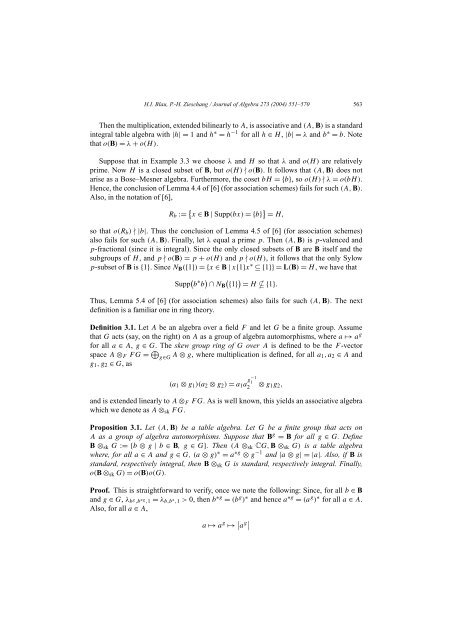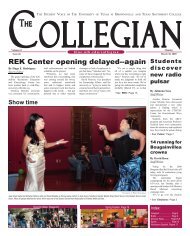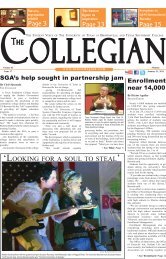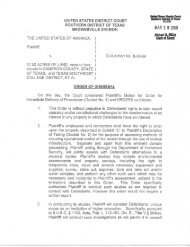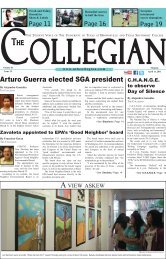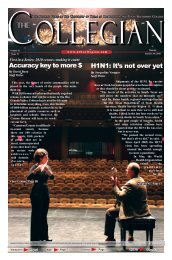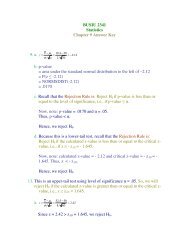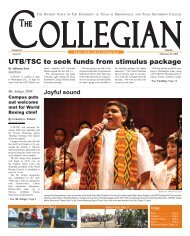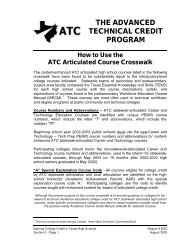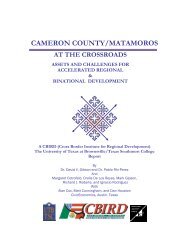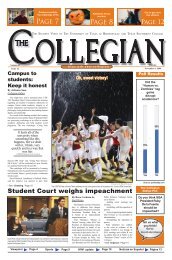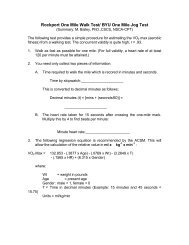Sylow theory for table algebras, fusion rule algebras, and ... - blue
Sylow theory for table algebras, fusion rule algebras, and ... - blue
Sylow theory for table algebras, fusion rule algebras, and ... - blue
You also want an ePaper? Increase the reach of your titles
YUMPU automatically turns print PDFs into web optimized ePapers that Google loves.
H.I. Blau, P.-H. Zieschang / Journal of Algebra 273 (2004) 551–570 563<br />
Then the multiplication, extended bilinearly to A, is associative <strong>and</strong> (A, B) is a st<strong>and</strong>ard<br />
integral <strong>table</strong> algebra with |h|=1<strong>and</strong>h ∗ = h −1 <strong>for</strong> all h ∈ H , |b|=λ <strong>and</strong> b ∗ = b. Note<br />
that o(B) = λ + o(H).<br />
Suppose that in Example 3.3 we choose λ <strong>and</strong> H so that λ <strong>and</strong> o(H) are relatively<br />
prime. Now H is a closed subset of B, buto(H) ∤ o(B). It follows that (A, B) does not<br />
arise as a Bose–Mesner algebra. Furthermore, the coset bH ={b}, soo(H) ∤ λ = o(bH).<br />
Hence, the conclusion of Lemma 4.4 of [6] (<strong>for</strong> association schemes) fails <strong>for</strong> such (A, B).<br />
Also, in the notation of [6],<br />
Rb := x ∈ B | Supp(bx) ={b} = H,<br />
so that o(Rb) ∤ |b|. Thus the conclusion of Lemma 4.5 of [6] (<strong>for</strong> association schemes)<br />
also fails <strong>for</strong> such (A, B). Finally, let λ equal a prime p. Then(A, B) is p-valenced <strong>and</strong><br />
p-fractional (since it is integral). Since the only closed subsets of B are B itself <strong>and</strong> the<br />
subgroups of H ,<strong>and</strong>p∤o(B) = p + o(H) <strong>and</strong> p ∤ o(H), it follows that the only <strong>Sylow</strong><br />
p-subset of B is {1}.SinceNB({1}) ={x ∈ B | x{1}x ∗ ⊆{1}} = L(B) = H ,wehavethat<br />
Supp b ∗ b <br />
∩ NB {1} = H {1}.<br />
Thus, Lemma 5.4 of [6] (<strong>for</strong> association schemes) also fails <strong>for</strong> such (A, B). The next<br />
definition is a familiar one in ring <strong>theory</strong>.<br />
Definition 3.1. Let A be an algebra over a field F <strong>and</strong> let G be a finite group. Assume<br />
that G acts (say, on the right) on A as a group of algebra automorphisms, where a ↦→ ag <strong>for</strong> all a ∈ A, g ∈ G. Theskewgroup ring of G over A is defined to be the F -vector<br />
space A ⊗F FG= <br />
g∈G A ⊗ g, where multiplication is defined, <strong>for</strong> all a1,a2 ∈ A <strong>and</strong><br />
g1,g2 ∈ G, as<br />
(a1 ⊗ g1)(a2 ⊗ g2) = a1a g−1<br />
1<br />
2<br />
⊗ g1g2,<br />
<strong>and</strong> is extended linearly to A ⊗F FG. As is well known, this yields an associative algebra<br />
which we denote as A ⊗sk FG.<br />
Proposition 3.1. Let (A, B) be a <strong>table</strong> algebra. Let G be a finite group that acts on<br />
A as a group of algebra automorphisms. Suppose that B g = B <strong>for</strong> all g ∈ G. Define<br />
B ⊗sk G := {b ⊗ g | b ∈ B, g ∈ G}. Then(A ⊗sk CG, B ⊗sk G) is a <strong>table</strong> algebra<br />
where, <strong>for</strong> all a ∈ A <strong>and</strong> g ∈ G, (a ⊗ g) ∗ = a ∗g ⊗ g −1 <strong>and</strong> |a ⊗ g| =|a|. Also, if B is<br />
st<strong>and</strong>ard, respectively integral, then B ⊗sk G is st<strong>and</strong>ard, respectively integral. Finally,<br />
o(B ⊗sk G) = o(B)o(G).<br />
Proof. This is straight<strong>for</strong>ward to verify, once we note the following: Since, <strong>for</strong> all b ∈ B<br />
<strong>and</strong> g ∈ G, λb g ,b ∗g ,1 = λb,b ∗ ,1 > 0, then b ∗g = (b g ) ∗ <strong>and</strong> hence a ∗g = (a g ) ∗ <strong>for</strong> all a ∈ A.<br />
Also, <strong>for</strong> all a ∈ A,<br />
a ↦→ a g ↦→ a g


